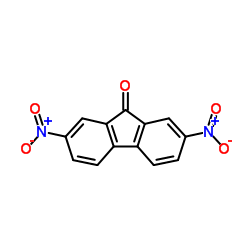Potent mutagenic impurities in a commercial sample of 3-nitro-9-fluorenone.
Z L Jin, X B Xu, J P Nachtman, E T Wei
文献索引:Cancer Lett. 15(3) , 209-14, (1982)
全文:HTML全文
摘要
A commercial sample of 3-nitro-9-fluorenone was a potent mutagen in the Ames Salmonella assay, producing 1000 TA98 net revertants per plate at 0.76 microgram/plate without the presence of liver homogenates (-S9). After purification by high-pressure liquid chromatography (HPLC), 3-nitro-9-fluorenone was found to be at least 6 times less active than the parent sample. The commercial sample was fractionated by HPLC and the mutagenic impurity peaks collected and subjected to high-resolution mass spectrometry (HRMS). The mass spectra of 2 potent mutagenic fractions showed the principal molecular species to be a dinitrofluorenone and an acetamidomononitrofluorenone. Samples of synthetic 2,7-dinitro-9-fluorenone and 2-acetamido-3-nitro-9-fluorenone had mutagenic activities, HPLC retention times, and mass spectra characteristics similar to the mutagenic impurity fractions collected from the commercial sample.
相关化合物
| 结构式 | 名称/CAS号 | 分子式 | 全部文献 |
|---|---|---|---|
 |
2,7-二硝基-9-芴
CAS:31551-45-8 |
C13H6N2O5 |
|
Spontaneous and mutagen-induced deletions: mechanistic studi...
1984-07-01 [Proc. Natl. Acad. Sci. U. S. A. 81(14) , 4457-61, (1984)] |
|
Mutagenicity of diesel-exhaust particle extract, 1-nitropyre...
1983-12-01 [Mutat. Res. 124(3-4) , 191-200, (1983)] |
|
Charge transfer complexes of 9-vinyl-carbazole with pi accep...
2004-06-01 [Spectrochim. Acta. A. Mol. Biomol. Spectrosc. 60(7) , 1421-6, (2004)] |
|
Voltammetric Determination of Genotoxic Nitro Derivatives of...
[Electroanalysis 22(17-18) , 2034-2042, (2010)] |
|
Preparation and characterization of a 1: 1 complex of tetrat...
[Synthetic Metals 58(1) , 73-76, (1993)] |